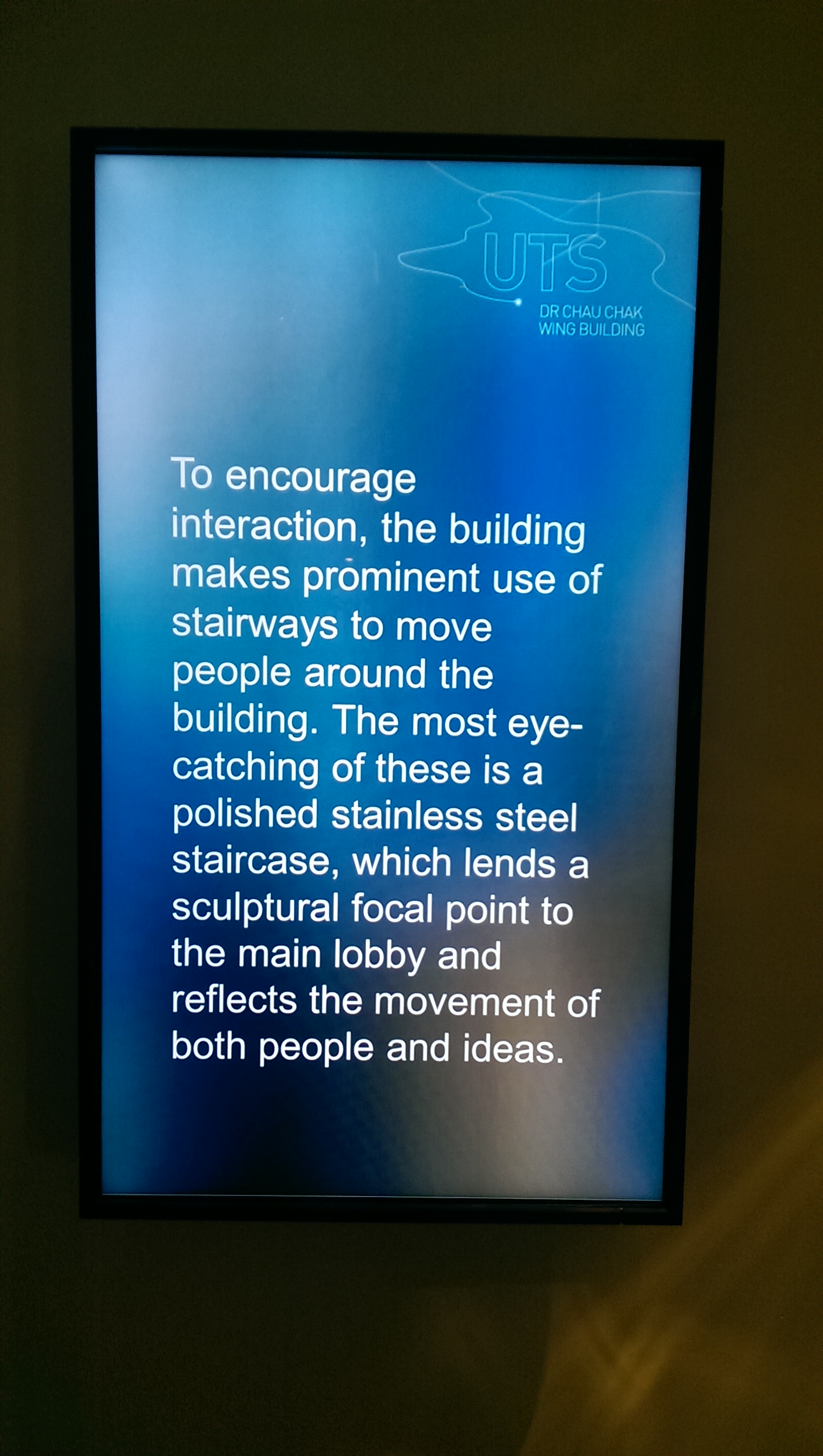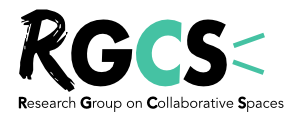First of all, I would like to say that I really like UTS new building designed by Franck Gehry. It makes me think about Gaudi’s productions in Barcelona. The façade is amazing. The stairs (see picture below) and new amphitheaters are highly iconic. Volumes, lights, wood, glasses, are part of a great aesthetic experience.

But I wonder if all this really leaves a room for everyday activities of administrative and technical staff, academics and students. Making a tour of the place (with a major academic of UTS) was a fantastic experience. But the day after this visit, I started wondering about something. A couple of years ago, campus and academic buildings were designed first. Then, they were enacted through campus tours with parents and prospective students. Today (in particular for this building), it seems that the campus and building tour is designed first (all iconic artifacts and glamorous trajectories are carefully crafted), and the building and volumes are then built around it. This morning Gibson Burrell (a major academic attending the event) mentioned, in the process of designing a building, the sad emphasis on ‘users’ instead of ‘residents’. He took the example of a building heavily targeting transitional students. Designers just expect people to go through the building and use it during short stays. They are just part of a flow, a continuous flow which replaces continuous residence.
Maybe it works for there. As I was seated for a presentation in one of the innovative amphitheaters of the place (completely circular, with the desk of the teacher at the center) I looked at the windows behind (entrance of the room) and I realized that they were more for external visitors and transitional populations (students) than for me and my colleagues. During the time and space of a visit or a tour, students (likely to pay a lot of money) can see what they will pay for, they can clearly materialize, perform, the service and its value.
In the context of academic buildings, are we moving towards ‘buildings to visit’? Of course, this is only one part of the story. There are a lot of places, classrooms (which clearly make me dream compared to those I see in France), lightfull offices and spaces. I see the word collaborative everywhere. Collaboration is a strong expectation.

Many rooms are called ‘collaborative something’. But is collaboration something which needs to be stated? Most of all, collaboration needs a duration across time and space. I think it cannot be located, but repeated and extended. I find strange these small pieces of collaborations I see everywhere on walls. Are we entering into a world for which collaboration is more and more an imperative, the heart of contemporary managerial ideology?
To write this short piece, I’m seated somewhere quietly in this beautiful building. Just looking at how light and people flow. Thinking slowly. It’s good, for a moment, not to be in a collaborative mood. But I guess this was also something Franck expected to happen J
FdV
